Illawarra Steelers
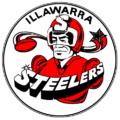 | |
| Club information | |
|---|---|
| Full name | Illawarra District Rugby League Football Club |
| Founded | 13 December 1980 |
| Departed | 1998 (merged to form St George Illawarra Dragons) |
| Former details | |
| Competition | NSWRL, ARL, NRL |
| 1998 | 12th of 20 |
| Records | |
| Premierships | 0 |
| Runners-up | 0 |
| Minor premiership | 0 |
| Wooden spoons | 3 - 1985, 1986, 1989 |
The Illawarra Steelers are an Australian rugby league football club based in the city of Wollongong, New South Wales. The club competed in Australia's top-level Rugby League competition from 1982, when they, along with the Canberra Raiders, were admitted into the then New South Wales Rugby Football League premiership until 1998 when they formed a new joint venture team, the St. George Illawarra Dragons with the St. George Dragons in 1999.[1] Over those seventeen seasons the club received three wooden spoons, made the play-offs twice and had a total of three of its players (two New South Wales Blues and one Queensland Maroon) selected to don the green and gold for Australia.
Illawarra still field stand alone teams in the NSW Cup (as the Illawarra Cutters), and in the SG Ball (under 18's) and Harold Matthews (under 16's) competitions as the Steelers. Their mascot from 1982 to 1998 was the popular Stanley, the Steel Avenger (commonly referred to as Stanley the Steeler).
23,750 capacity WIN Stadium is their home stadium.
History
Formation
Illawarra made several attempts to enter the NSWRL competition, the first major attempt was in the 1950s. The Illawarra Rugby League made a much more serious attempt for entry into the 1967 season but were blocked by the Country Rugby League (CRL) who used their constitution to prevent Illawarra's plans of playing in the Sydney competition. This was a crucial moment in the emergence of the Cronulla-Sutherland Sharks, as it was after Illawarra were blocked and the NSWRL wanted a second new club to enter with Penrith, preferably in the South of Sydney due to continued success at that time of the St. George Dragons, to avoid the need for a bye that "the shire's" submission was successful.
In this unsuccessful bid, Illawarra were to be backed by the then wealthy Illawarra Leagues Club in Church Street, Wollongong. The club is the second oldest leagues club in the world. It was originally established to financially support top class rugby league and soccer in the region.
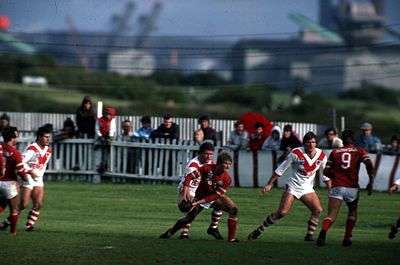
On 13 December 1980, the NSWRL voted almost unanimously for Illawarra to enter in the 1982 season. Only three dissenting votes were counted, which were the three CRL representatives present. Illawarra's organiser Bob Millward told those at the meeting that rugby league in the region depended on this bid getting the go ahead. Interest in the region had turned away from local football to the Sydney competition. The Illawarra Mercury daily newspaper was increasing its coverage of the Sydney premiership and Illawarra's inclusion was viewed as the best way of reviving the local league.
1980s
Illawarra entered the competition in 1982, with financial backing from many of the local leagues clubs. Their first captain was star fullback John Dorahy, and first coach Allan Fitzgibbon.[2] Unfortunately, the recession hit hard and the leagues club money dried up and the Steelers were a new club in desperate financial trouble. In 1984, BHP Steel saved the club, signing on as the major sponsor. BHP stayed with the Steelers until they left the NRL at the end of the 1998 season.
Their first 8 seasons produced 3 wooden spoons, but things started to improve for the club. In the 1989 Panasonic Cup the club reached the final which was played against the Brisbane Broncos at Parramatta Stadium. The Broncos raced to a 16-0 lead and it seemed the Steelers much more fancied opponents would run away with the game. But Illawarra, inspired by eventual man-of-the-match, Halfback Andy Gregory, hit back.[3] Young Illawarra juniors such as Brett Rodwell and Rod Wishart made their mark in this game, players that would form the foundation of the club's improved performances in the early 1990s. Illawarra lost the match 22-20, however Brisbane scored a try off what appeared to be forward pass. The large Illawarra contingent at Parramatta Stadium booed the Broncos after their win, with Brisbane captain "King" Wally Lewis gaining their ire by gesturing back. Illawarra's performance inspired Australian folk singer John Williamson to write a song about the match. The 1989 season also saw Gregory's Wigan and Great Britain team mate, Fullback Steve Hampson, playing for the Steelers.
1990s
1990 saw big improvements with the club finishing not too far away from the top 5. The Steelers licensed club opened its doors thanks to the efforts of the local community and businesses.
A new coach by the name of Graham Murray turned Illawarra into an almost unbeatable force at the Wollongong Showground in 1991, losing only to the Penrith Panthers who went on to win the premiership. A big win against Brisbane and a crushing 44-4 win over Canterbury-Bankstown were signs of things to come. A crucial refereeing decision by Bill Harrigan towards the end of the season in a game at Penrith Stadium put an end to their finals aspirations. Harrigan, much to his credit, apologised in the media after the game. Thus Illawarra missed out on a place in the finals by just two points, despite having a season points differential second only to eventual premiers, Penrith.
The Steelers had revenge in the 1992 pre-season Toohey's Challenge, defeating Brisbane 4-2 in a tryless final at Dubbo. This sparked their successful 1992 Winfield Cup campaign, going to within one game from the Grand Final.[4] Illawarra's first semi final was against future merger partner St George, beating "big-brother" 18-16. Next a loss to the Broncos 22-12 and their last chance against St George, losing 4-0. However, Illawarra were denied tries on several controversial occasions leaving the Steelers with a bitter end to their successful season.
1993 and '94 were disappointing in contrast to '92, but the club still managed to finish just outside the top 5 each year.
Super League hit in 1995 and the Steelers were in for a rough ride. The good work in becoming a credible force in the competition went out the window and the sacking of Graham Murray was the only incident where anyone in the competition lost their job because of Super League. Murray was organising meetings between Illawarra players and Super League officials, as Super League had intentions of either getting the Steelers or possibly a new Illawarra club. Local club Wests Illawarra were reported in the Illawarra Mercury as being a potential Illawarra Super League club. Local league fans reacted angrily and nothing came of it. Illawarra and its supporters remained loyal to the ARL, though boardmember and then speaker of the house of representatives, Dr Stephen Martin, resigned from the club citing the need to join Super League for the club to survive. Martin would be proved right within less than three years.
In 1997's stand-alone Australian Rugby League competition, the Steelers finished sixth, again qualifying for the Finals series, only to bow out in the first week. 1998 saw the Steelers come agonisingly close to the finals, only missing out because of other results going against them. During season 1998, Illawarra approached St George and initiated joint venture talks. Western Suburbs (whom Illawarra were rumoured to be merging with in the 1980s) and Cronulla both expressed interest in talking with Illawarra but Steelers CEO Bob Millward claimed that the club's preferred partner was St George.
The Illawarra Steelers produced some brilliant playing talent, most notably International representatives Rod Wishart and Paul McGregor. Former Steelers players Trent Barrett, Shaun Timmins and Craig Fitzgibbon have gone on to represent their country since the Steelers' final stand-alone season in 1998.
Season summaries
| Competition | Games Played | Games Won | Games Drawn | Games Lost | Ladder Position | P | R | M | F | W | Coach | Captain | Details |
|---|---|---|---|---|---|---|---|---|---|---|---|---|---|
| | 26 | 6 | 0 | 20 | 13 / 14 | | | ||||||
| | 26 | 8 | 0 | 18 | 12 / 14 | | |||||||
| | 24 | 12 | 0 | 12 | 9 / 13 | | | ||||||
| | 24 | 5 | 0 | 19 | 13 / 13 | | | ||||||
| | 24 | 7 | 0 | 17 | 13 / 13 | | |||||||
| | 24 | 8 | 0 | 16 | 11 / 13 | | |||||||
| | 22 | 6 | 1 | 15 | 13 / 16 | | | ||||||
| | 22 | 2 | 1 | 19 | 16 / 16 | | | | |||||
| | 22 | 11 | 1 | 10 | 9 / 16 | | |||||||
| | 22 | 12 | 1 | 9 | 8 / 16 | | |||||||
| | 22 (3) | 13 (1) | 1 (0) | 8 (2) | 3 / 16 | | | ||||||
| | 22 | 12 | 0 | 10 | 7 / 16 | ||||||||
| | 22 | 11 | 3 | 8 | 6 / 16 | ||||||||
| | 22 | 10 | 1 | 11 | 12 / 20 | ||||||||
| | 22 | 8 | 0 | 14 | 14 / 20 | | | | |||||
| | 22 (1) | 10 (0) | 3 (0) | 9 (1) | 6 / 12 | | | | |||||
| | 24 | 11 | 1 | 12 | 12 / 20 | | |||||||
Joint venture
The Illawarra Steelers decided to form a joint venture with the St. George Dragons for the 1999 NRL season to form the St. George Illawarra Dragons. The Illawarra and St George contingents are equal stakeholders in the new club, and until 2014, half of the new team’s home games were played at WIN Stadium. The Illawarra Steelers have at times provided the bulk of St George Illawarra's squad, including internationals Matt Cooper, Luke Bailey, Jason Ryles, Shaun Timmins, Trent Barrett, Brett Morris, Josh Morris and Ben Creagh.
Some supporters, however, feel that the Illawarra is not appropriately acknowledged in St George Illawarra, as the logo and main jersey were taken directly from those of St George (albeit with the addition of "Illawarra" to the bottom of the emblem). More recently, however, St George Illawarra has taken steps to appropriately acknowledge both St George and Illawarra as equally as possible. One example of this is that, on 18 April 2004 against Penrith at WIN Stadium, St George Illawarra introduced an alternate jersey which was predominantly red (with white stripes), this being recognisably similar to the former Steelers' jersey. This replaced the "blood and bandages" jersey of red-and-white horizontal stripes, which was also a former St George jersey.
While Illawarra is still somewhat represented in the NRL by the St. George Illawarra Dragons, the Illawarra Steelers still participate as a single entity in the NSW Cup (as the Illawarra Cutters from 2012, due to a sponsorship deal with Illawarra Coal) and in the junior competitions, most notably S.G. Ball Cup and Harold Matthews Cup. The Steelers made the Harold Matthews Cup grand final in 2011, losing 13-12 to the Canterbury Bulldogs. Illawarra have won two premierships in both the Harold Mathews and SG Ball competitions, and have yet to taste premiership success in the NSW Cup as either the Illawarra Steelers or Cutters.
In early 2006, WIN Television Network bought a 25% share in the St. George Illawarra club for $6.5 million (half of Illawarra's share), erasing most of the debt Illawarra owed to St. George. This formalised the strong support the network has shown for the Steelers in years gone by and ensured that Wollongong will continue to host world class rugby league matches. WIN Corp can only sell their stake back to the Steelers, should they wish to withdraw their involvement, thus ensuring Illawarra are properly represented in the joint venture.
In 2008, Illawarra's debt to St George was paid off, with the 20% sale of the Steelers Club building to a Bermuda-based company owned by Illawarra billionaire (and WIN Television boss) Bruce Gordon.
With the joint venture St. George Illawarra Dragons having won a premiership in 2010, there has been debate whether the St. George Dragons side of the joint venture can claim this as their 16th premiership and whether the Illawarra Steelers can claim this as their first premiership. Media outlets such as the Illawarra Mercury,[5] a newspaper based in Wollongong, New South Wales (being one of the bases for the joint venture) have noted this to be St George's first premiership in 31 years, having last won a premiership in 1979. Others, such as The Herald Sun,[6] a Melbourne Newspaper, claim this is not the case, stating that the joint venture is a completely new club despite the joint venture retaining much of the identity of the original St George Dragons club.
Name and Emblem
The name "Steelers" was chosen in reference to the local Port Kembla Steelworks, which was the Illawarra region's largest employer. (BHP, who owned the steelworks, eventually sponsored the team for most of their existence.) Other names considered were "Lions" and "Steelies". The actual 'Steelers' name came after a competition was run to choose a name.
- Illawarra Steelers - Emblems
-

1982-1997
-
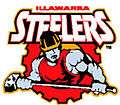
1998-
Colours
The original Steelers jersey was all scarlet with two white stripes on each sleeve. The alternate design was the same colours in reverse. The club kept this design until 1997, adding a third stripe on each sleeve and three hoops around the middle of the jersey. The Steelers simplistic design compared well with the many "space-aged" designs of several other clubs that came and went each season. For the Steelers heritage days in 2005 and 2010, the Dragons wore an Illawarra heritage jersey, which was the same as the original Steelers jumper. This move proved popular amongst former Illawarra fans. From 2011-2013, the Dragons wore an alternate jersey based on the original Steelers' design.
The colours scarlet and white were automatically chosen as they were long worn by Illawarra representative teams in several sports. Local miners uniforms in the early 20th century were scarlet and some associate this with the reason for it becoming the region's sporting colours. It is also the colour of the Illawarra Flame Tree, another symbol of the region.
Presently, the Illawarra Cutters and the junior Steelers wear a kit similar to that of the club's 1980s design. Many of the current NRL clubs are reverting to more simplistic jerseys, such as Illawarra's fellow 1982 entrants Canberra.
Illawarra Steelers Leagues Club
The Illawarra Steelers Leagues Club is situated in the middle of the City Beach precinct, the Steelers Club is located adjacent to WIN Entertainment Centre and WIN Stadium. It is directly across the road from the grounds Western Grandstand. Established in 1990, the club has struggled financially against much larger and more popular leagues clubs in Wollongong, such as Collegians, Dapto Leagues Club, Wests Illawarra Leagues Club, and Shellharbour Workers Club in Shellharbour. However, after a major restructure of its operations, the Steelers Club has trading profitably over the last 12 months. Twenty percent of the club premises were sold to Bermuda-based Billionaire and owner of WIN Corp, Bruce Gordon. The sale fetched 2.6 million dollars.[7]
Stadium
The Illawarra Steelers played all of their home games at the Wollongong Showground (currently named WIN Stadium). The ground for many years was also named Steelers Stadium, which many still affectionately call the ground.
The Steelers record attendance in Wollongong was against St. George on 21 May 1993 at 17,527. The lowest crowd record was against Cronulla on 6 July 1985 at 3,433.
The Illawarra sides in lower grades still the play the bulk of home games at WIN Stadium. On rare occasions, the Illawarra Cutters move home games to WIN Jubilee Oval to coincide with NRL fixtures and to also other venues on the South Coast.
Junior Steelers
The Illawarra Steelers still field teams in the under-age NSWRL competitions of Harold Matthews Cup (U-16s) and S. G. Ball Cup (U-18s). They last won premierships in these grades in 1996.
Supporters and Team Song
Supporters
Counted amongst the club's supporters is Olympic athlete Louise McPaul[8]
Team Song
Taste of Steel (1984)
Come on, mighty Wollongong,
We're the Illawarra Steelers.
You can't go wrong with the men so strong,
Gonna give 'em the taste of steel.
We mean it,
We're gonna make it happen right.
And when the whistle blows,
We're gonna get out there and fight.
It's our best game,
It's our own name,
It's our red crusade.
Come on, mighty Wollongong,
We're the Illawarra Steelers.
You can't go wrong with the men so strong,
Gonna give 'em the taste of steel.
We're gonna tackle,
We're gonna shake 'em to the ground.
Gonna keep on scoring tries,
Gonna keep on winning games.
We're out to play,
We're out to stay,
It's our red crusade.
Come on, mighty Wollongong,
We're the Illawarra Steelers.
You can't go wrong with the men so strong,
Gonna give 'em the taste of steel.
The Future
The Illawarra Steelers club members voted unanimously to allow the sale of 20% of the club premises to a company owned by Bermuda-based Wollongong billionaire Bruce Gordon. The sale fetched the club $2.6 million, allowing Illawarra to clear all debts to St George.[9] Whilst the Steelers Club is improving its financial position, and now trading profitably, the club still finds itself struggling against the larger and more popular of other Leagues Clubs in Wollongong such as Collegians, The Builders Club, Wests Illawarra and Illawarra Leagues, and also Shellharbour Workers Club in Shellharbour.
Statistics and Records
Club
- Biggest win: 45 - 0 against Canberra Raiders at Wollongong Showground on 25 April 1982
- Worst defeat: 0 - 51 against Newtown Jets at Henson Park on 2 May 1982
- Longest winning streak: 4 matches
- 4–25 July 1993
- 25 June - 17 July 1997
- Longest losing streak: 11 matches, 1988
- Largest home crowd: 17,527, against St. George Dragons at WIN Stadium, Wollongong on 21 May 1993
Individual
- Most tries in a match: 5 by Alan McIndoe against Gold Coast Seagulls at Steelers Stadium on 4 May 1991
- Most goals in a match: 10 by Rod Wishart against Parramatta Eels at Steelers Stadium on 16 July 1995
- Most points in a match: 22 (1 try, 9 goals) by Rod Wishart against Western Suburbs Magpies at Steelers Stadium on 27 August 1995
- Most tries in a season: 19 by Alan McIndoe in 1991 NSWRL season
- Most goals in a season: 76 by John Dorahy in 1983 NSWRFL season
- Most points in a season: 176 (11 tries, 66 goals) by Rod Wishart in 1995 ARL season
- Most tries in club history: 68 by Rod Wishart, between 1989 and 1998
- Most goals in club history: 386 by Rod Wishart, between 1989 and 1998
- Most points in club history: 1,044 (68 tries, 386 goals) by Rod Wishart between 1989 and 1998
- Most appearances: Michael Bolt 167, Brett Rodwell 156, Rod Wishart 154, Neil Piccinelli 145, Brian Hetherington 144, John Cross 137, Alan McIndoe 125, Paul McGregor 124, John Simon 120, David Walsh 114
Players
Team of Steel
In 2006 the Illawarra Steelers celebrated their 25th anniversary and named a "Team of Steel", including the best players of the club's history.
|
|
Representative players
Including players from the Illawarra Steelers that have represented while at the club and the years they achieved their honours, if known.
International
Australia
 Alan McIndoe (1988)
Alan McIndoe (1988) Rod Wishart (1991–92, 1994–95)
Rod Wishart (1991–92, 1994–95) Bob Lindner (1993)
Bob Lindner (1993) Paul McGregor (1994–95, 1997)
Paul McGregor (1994–95, 1997) John Simon (1997)
John Simon (1997)
New Zealand
 Craig Smith (1998)
Craig Smith (1998)
Great Britain
 Andy Gregory (1989)
Andy Gregory (1989) Steve Hampson (1989)
Steve Hampson (1989)
Rest Of The World
 Craig Smith (1997)
Craig Smith (1997)
State Of Origin
New South Wales
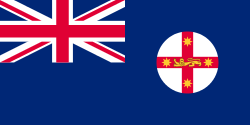 Brian Hetherington (1984, 1986)
Brian Hetherington (1984, 1986) Rod Wishart (1990–98)
Rod Wishart (1990–98) Paul McGregor (1992–95, 1997–98)
Paul McGregor (1992–95, 1997–98) John Simon (1992)
John Simon (1992) Brett Rodwell (1995)
Brett Rodwell (1995) Trent Barrett (1997)
Trent Barrett (1997)
Queensland
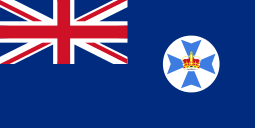 Alan McIndoe (1988)
Alan McIndoe (1988) Bob Lindner (1993)
Bob Lindner (1993) Darren Fritz (1994)
Darren Fritz (1994) Craig Smith (1997)
Craig Smith (1997)
City Vs Country Origin
NSW Country
 Paul Upfield (1988)
Paul Upfield (1988) Rod Wishart (1991–94, 1996)
Rod Wishart (1991–94, 1996) John Cross (1995)
John Cross (1995) Brett Rodwell (1991, 1993, 1995)
Brett Rodwell (1991, 1993, 1995) John Simon (1992–95)
John Simon (1992–95)
Coaches
- Allan Fitzgibbon 1982-1983 and 1995
- Brian Smith 1984-1987
- Terry Fearnley 1988
- Ron Hilditch 1989-1990
- Graham Murray 1991-1995
- Allan McMahon 1996
- Andrew Farrar 1997-1998
Average attendance
The Illawarra Steelers average attendances from their entry into the competition in 1982 were:[10]
| Season | Average Attendance |
|---|---|
| 1998 | 9,248 |
| 1997 | 8,695 |
| 1996 | 7,434 |
| 1995 | 9,651 |
| 1994 | 11,911 |
| 1993 | 12,321 |
| 1992 | 13,750 |
| 1991 | 12,244 |
| 1990 | 9,968 |
| 1989 | 7,253 |
| 1988 | 8,386 |
| 1987 | 7,498 |
| 1986 | 7,535 |
| 1985 | 5,634 |
| 1984 | 7,086 |
| 1983 | 5,892 |
| 1982 | 8,222 |
References
- ↑ Warne-Smith, Drew (2 October 2010). "Saints face test with nerves of Steelers". The Australian. Retrieved 24 July 2011.
- ↑ Lester, Gary, ed. (1984). Rugby League: Action '85. Sydney: Fairfax Publishing. p. 30. ISBN 0-909558-83-3.
- ↑ http://www.loverugbyleague.com/feature_1634-legends:-andy-gregory.html
- ↑ Barrett, Chris (26 August 2010). "Last of the Steelers set to bring down final curtain". The Sydney Morning Herald. Australia: Fairfax Media. Retrieved 5 October 2010.
- ↑ "Dragons' first premiership win in 31 years". Illawarra Mercury. 3 October 2010. Retrieved 3 October 2010.
- ↑ "ST George Illawarra breaks premiership drought to win its first NRL grand final". The Herald Sun. 3 October 2010. Retrieved 3 October 2010.
- ↑ . Illawarra Mercury http://www.illawarramercury.com.au/news/local/news/general/steelers-club-approves-26-million-bailout/1344484.aspx. Missing or empty
|title=(help) - ↑ Weidler, Danny (1999-03-14). "Athletes told to fake it". The Sun-Herald. Fairfax Digital. p. 119. Retrieved 2009-10-06.
- ↑ http://www.illawarramercury.com.au/news/local/news/general/steelers-club-approves-26-million-bailout/1344484.aspx
- ↑ Illawarra Steelers at Rugby League Project